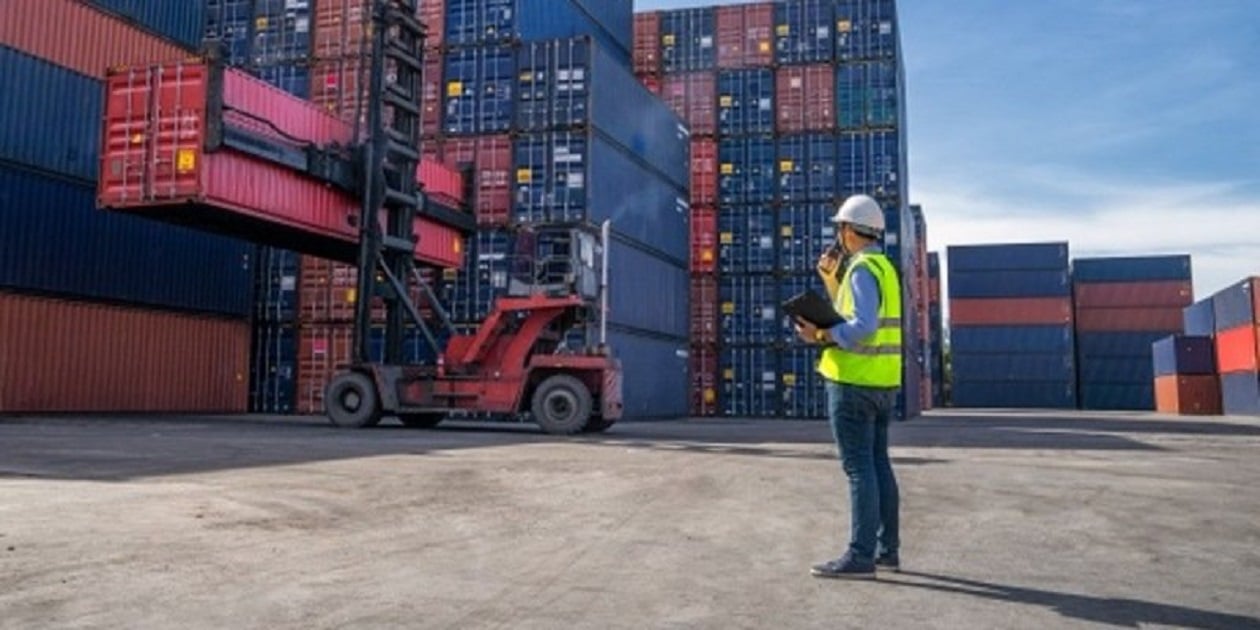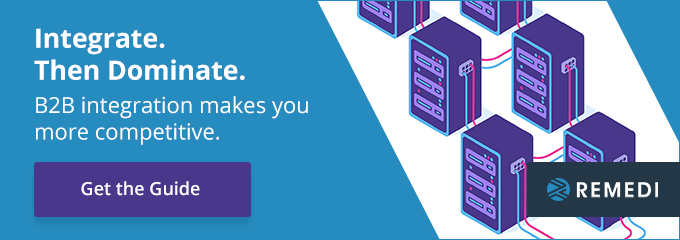
Efficiency has always been a major issue in the transportation industry, yet it’s taken on even greater importance today. More data is coming in than ever before, and customer expectations about efficiency (and digital transformation) have changed. How can the transportation industry overcome these challenges to thrive in a competitive, uncertain business landscape?
This article highlights several challenges the transportation industry faces and how to overcome them for sustainable success. Are You Ready to integrate?
What Challenges Does the Transportation Industry Face?
Today, the transportation industry faces the following challenges:
- A lack of visibility into the supply chain
- Changing customer expectations
- A lack of digital maturity
- New technologies and their impact on the industry
A Lack of Visibility into the Supply Chain
Many industries suffer from a lack of visibility into their supply chain. However, this issue is probably most pronounced in the transportation and logistics field. The root of this problem lies in the growing complexity of business today. Your trading partners are no longer located in your state or even in your country – they’re spread out across the world. Moreover, you have more trading partners, which increases the complexity further.
As a result, you don’t have supply chain visibility. You can’t predict when a port strike will erupt, let alone how long it will last. If there’s a delay in a shipment, you don’t know automatically. This lack of visibility leads to:
- Poor decisions
- Delays
- Errors
- Unhappy customers
- A bad reputation
Changing Customer Expectations
In our personal lives, we expect to send information digitally to the companies with whom we do business. We become irritated when we can’t do so. Yet, our own companies don’t always have the digital capabilities customers have come to expect; many transportation and logistics firms still utilize highly manual, error-prone processes.
Moreover, some customers might have requirements that you can’t meet. For example, they may ask you to submit invoices digitally through a particular protocol. If you can’t do that, you’ll lose that business, and it could be a large company.
A Lack of Digital Maturity
“Digital maturity” refers to how well your organization adapts to and responds within a digital environment. It assesses things such as:
- How many of your processes are digital?
- Do you have the proper infrastructure in place to support digital processes?
- Does your company’s leadership support a cultural shift towards greater digital maturity?
- Do your employees have the knowledge, skills, and mindset to support greater digital maturity?
Many transportation companies still use many manual processes. Not only do manual processes take longer, but they’re also more likely to lead to errors. Think about how easy it is to enter the wrong value when typing; then, consider the consequences of a single error. On a purchase order, it could be the difference between a dozen shipments and 120 shipments – and let’s not even get started on the impact it has on invoices.
Your digital maturity has an effect on your supply chain maturity, too. “Supply chain maturity” refers to the resiliency of your supply chain. Your supply chain is like a fence – if you have one weak link, what happens to the rest of the structure? How quickly can you patch up the link?
“Your supply chain is like a fence – it’s only as strong as your weakest link.”
There are four levels of supply chain maturity:
- Reactive supply chain management
- Internal supply chain integration with planned buffers
- Collaboration across an extended supply chain network
- Dynamic supply chain adaptation and flexibility
Many transportation companies are stuck at the first level – they’re forced to react to supply chain disruptions. That makes them less competitive because they spend more time putting out fires than anything else.
How Can the Transportation Industry Accelerate Its Efficiency?
The answer to accelerating efficiency within the transportation industry lies in embracing a digital transformation.
The term “digital transformation” has been widely used and equally misunderstood. It means that you use technology to radically improve the reach or performance of a business. However, many people interpret the phrase this way: as long as we implement technology, we’ve undergone a digital transformation.
“Just because you’ve implemented technology doesn’t mean you’ve undergone a digital transformation.”
Here’s how you know that you’ve undergone a digital transformation: the technology radically improves your business’ performance, or it enables you to take advantage of new opportunities.
The Two Components of a Digital Transformation
Two components enable a digital transformation:
- The right technology
- The right mindset

The Right Technology
Enterprise application integration(EAI) can overcome the challenges in the transportation industry we mentioned earlier. EAI brings all of your data into one place, synching apps, systems, and devices so that employees get their information systems of record.
Here’s how EAI accelerates efficiency for transportation firms:
- It provides greater supply chain visibility
- It automates processes
- It helps you meet customer demands and requirements
Greater Supply Chain Visibility with Enterprise Application Integration
EAI boosts supply chain visibility by bringing all of your enterprise data into one place. That gives you greater visibility into your supply chain.
By integrating your applications, disconnected systems could suddenly “talk” to one another. For example, when a purchase order comes in, there’s no longer a need for someone to manually update the system. It can go directly to the dispatch team to schedule a shipment. There’s no more guessing about when you’re supposed to receive information or whether the information is correct because someone entered it manually.
Enterprise Application Integration Automates Processes
Another benefit of EAI is that it automates business processes. Employees don’t have to manually enter data anymore; it can come straight out of systems of record.
Automation virtually eliminates errors. As we know, errors cost time and money. They lead to delays, chargebacks, and ultimately to customer complaints. Enough complaints damage your reputation, which causes you to lose customers.
Enterprise Application Integration Helps You Meet Customer Demands and Requirements
As we mentioned earlier, customer demands and requirements have changed. They expect to be able to send information to you digitally. In fact, some large companies won’t do business with you unless you can transmit data digitally.
EAI gives you the infrastructure you need to integrate with external systems. This means that you’ll be able to connect to your trading partners’ systems and share information. With this capability, you’ll be able to seize new opportunities and work with new trading partners or move into different markets.
The Right Mindset
It might seem a bit odd to discuss mindset in a post about digital transformation. Yet, your organization’s mindset plays such a critical role in determining the success of your digital transformation endeavors.
Here’s the thing – you can implement all of the technological solutions you want, but nothing will change if:
- Employees don’t use them or find workarounds for them
- Employees don’t care about or understand the importance of a digital transformation
- The company’s leadership doesn’t champion digitization
- The company’s leadership doesn’t see the value in a digital transformation
Just because such a mindset doesn’t exist at your company right now doesn’t mean that it’s not possible to foster one. That being said, remember that Rome wasn’t built in a day; it will take time to lay the groundwork for this cultural shift.
Encouraging a New Mindset at Your Company
We can’t overstate the importance of support from the company’s leadership for digital transformation. The leadership sets the tone for the organization. Employees at all levels of a company look to a leader for inspiration and guidance. Everything he or she does affects employee beliefs about their jobs.
How can you convince a leader who’s reluctant to embrace digital transformation and invest in data integration systems? You must make the case that the status quo is hurting your business. Explain that you’re missing out on opportunities because of your lack of digital maturity.
“To convince business leaders about the need for digital transformation, explain how the status quo hurts your company.”
Typically, seeing hard costs (for example, “We lose $25,000 in business for every month it takes to onboard a new customer) persuades decision-makers about the necessity of increasing the firm’s digital maturity. However, there’s still another obstacle to surmount: employees.
Your employees play an essential role in digital transformation. After all, they’ll be the ones who will use the technology that will improve processes. If they’re not convinced of the value of digital transformation, though, your efforts will fall flat.
“Employees play an essential role in digital transformation.”
To ensure a successful digital transformation, employees need the right set of skills. They must be able to use the technology that will carry out this transformation. Additionally, they have to understand the importance of digital processes. Just because something has always been done one way doesn’t mean it’s the right way to do things, nor does it mean there isn’t a better way to do things.
The transportation industry is ripe for digital transformation. With a combination of data integration systems and the right mindset, transportation firms can accelerate their efficiency and achieve sustainable success. Integrate. Then Dominate.




